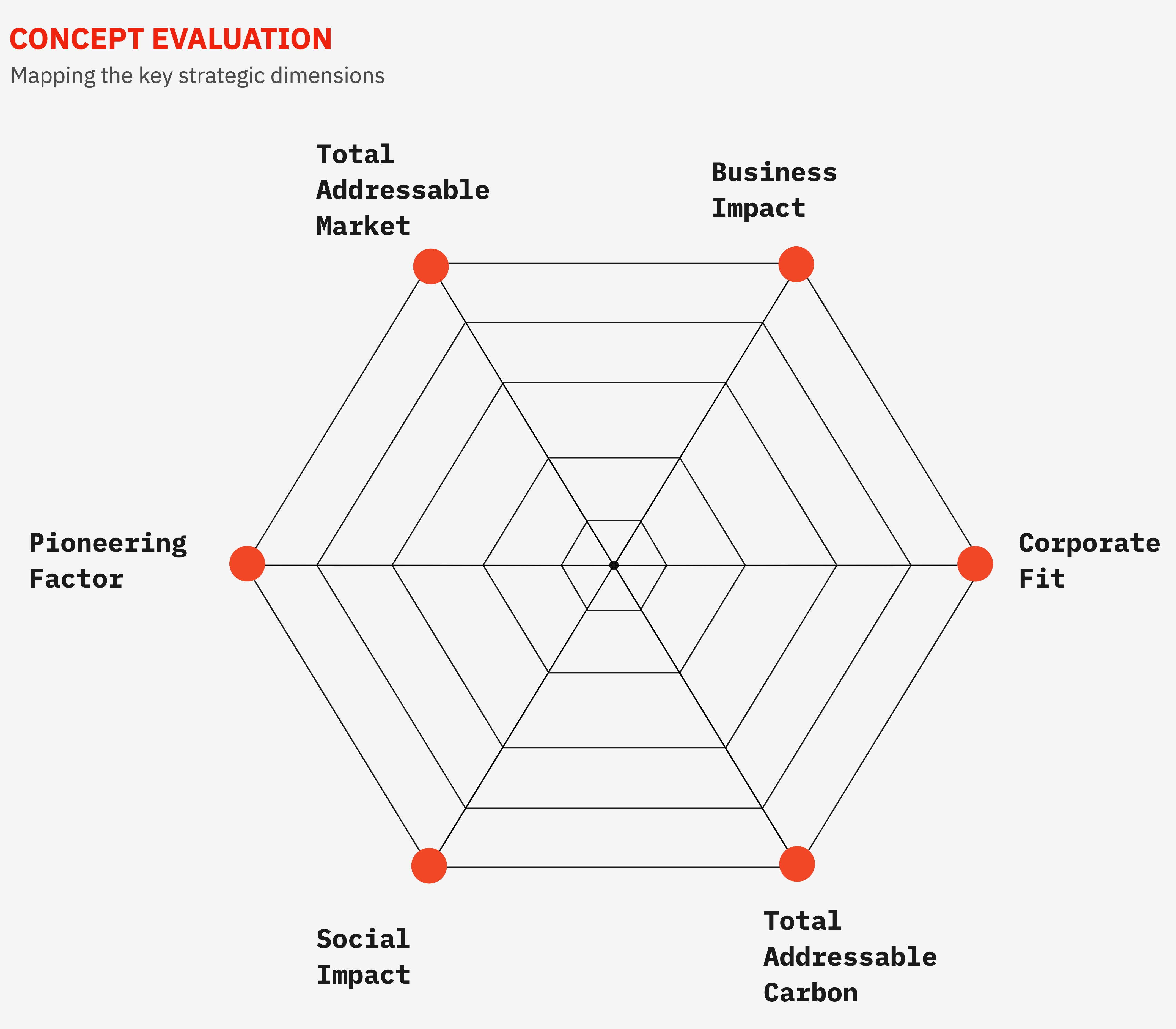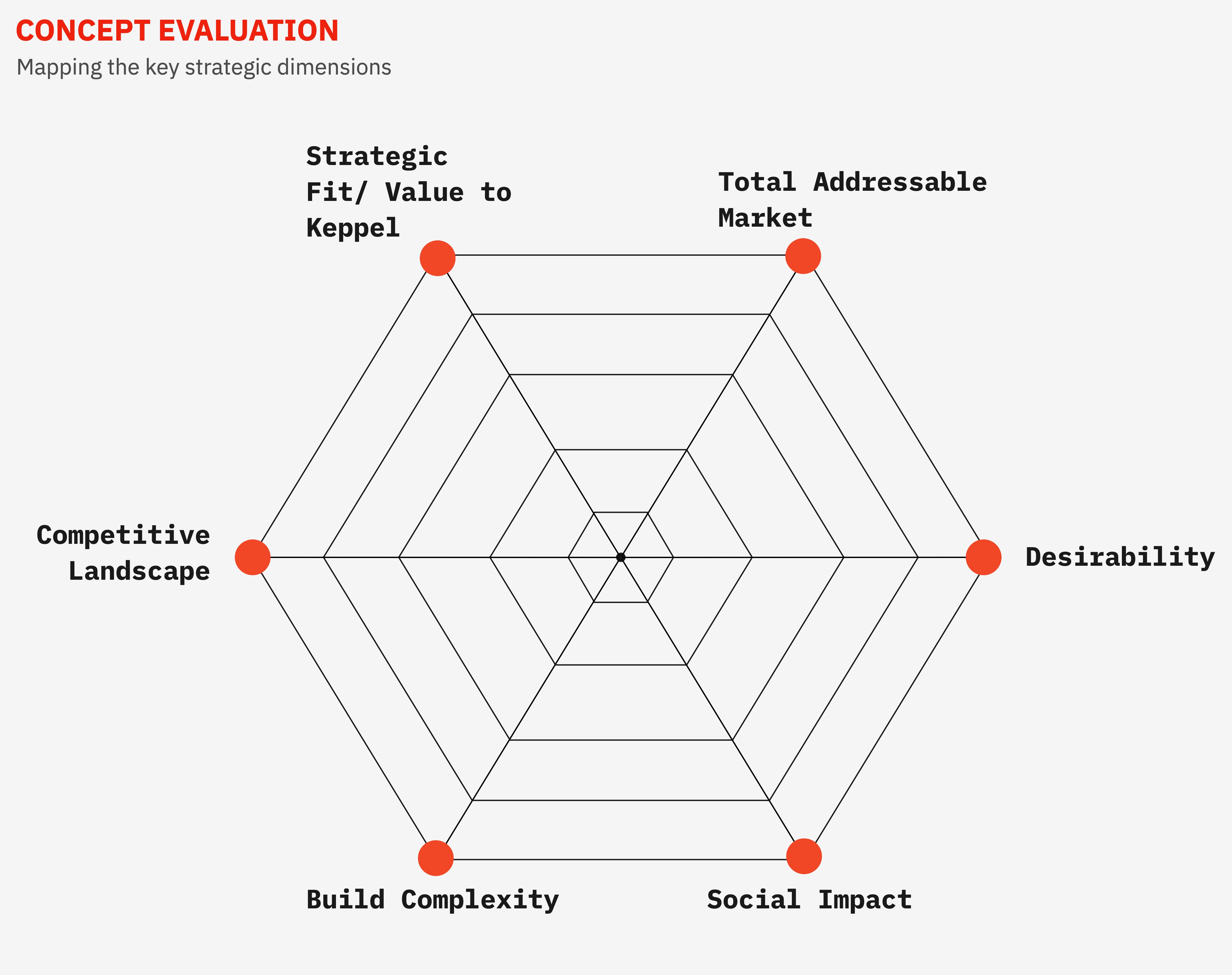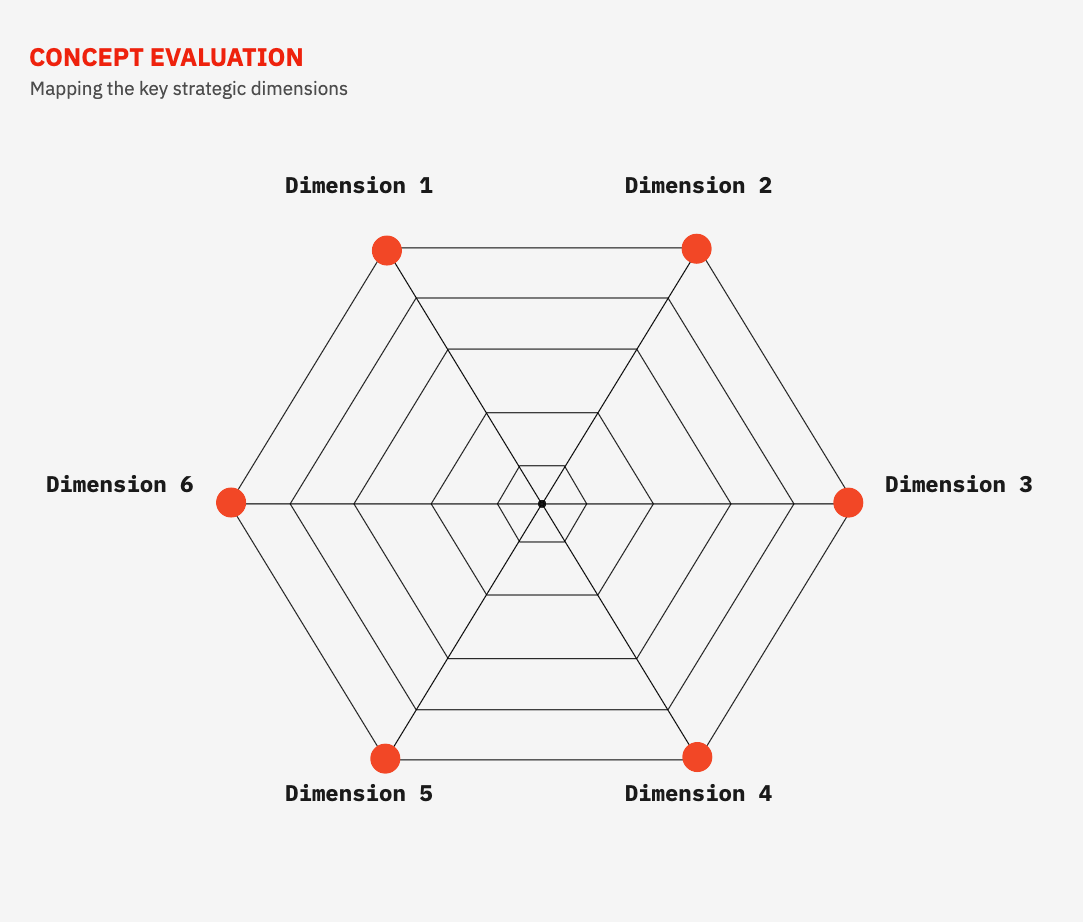¶ Strategic Business Criteria
¶ What it is
To prioritise and select concepts, it is essential to establish criteria that can be applied to evaluation as objectively as possible. It should not be just a person’s intuition or opinion that moves a concept forward but an agreed-upon set of ways to evaluate and prioritise based on the available data. Those are the strategic business criteria.
¶ Why it is useful
In the early stages of ideation and conception, it is easy for team members to fall in love with their ideas and prioritise ideas based on gut feeling. A set of strategic criteria helps to escape that trap.
¶ When to use it
Strategic Business Criteria should be developed and applied when making high-stakes decisions (like which concept to move forward with). More objective points of view are needed to make the best decisions possible.

¶
¶ How is it done
- Set up a session with the key project stakeholders and sponsors to set the criteria.
- Discuss what is most important to them in terms of outcome - have some examples prepared (like “Value to the Business,” “Customer Impact,” “Innovation Factor,” etc.) and allow them to add more.
- Let them prioritise the top 5-6 strategic criteria that should be applied in this case.
- Establish a database and rating base for these criteria that fits the context of the work and concepts.
¶ Do's & Don't
Do's
- Be creative - it is not all about revenue or profit. Projects might aim to create a halo effect or have other goals that are important to the company.
- Get the key decision makers involved, as they will later need to decide about funding requests. Having their criteria in the mix early on ensures you will be more successful.
Don't
- Avoid selecting too many criteria. For example, 4-6 is a good number.
- Avoid being too vague - the scoring mechanism must be straightforward.
¶ Tools needed
- Whiteboard (physical or virtual)
- Post-it notes (physical or virtual)
¶ Example

